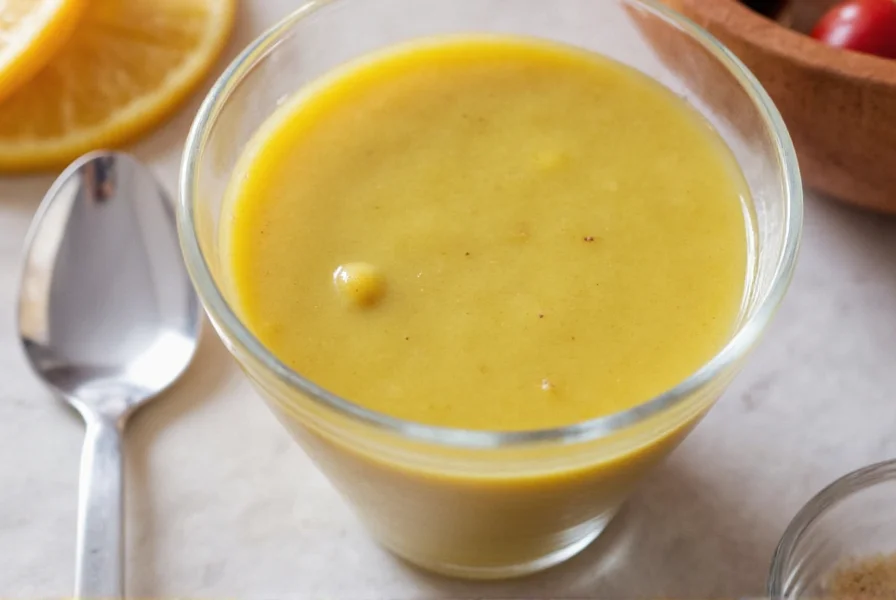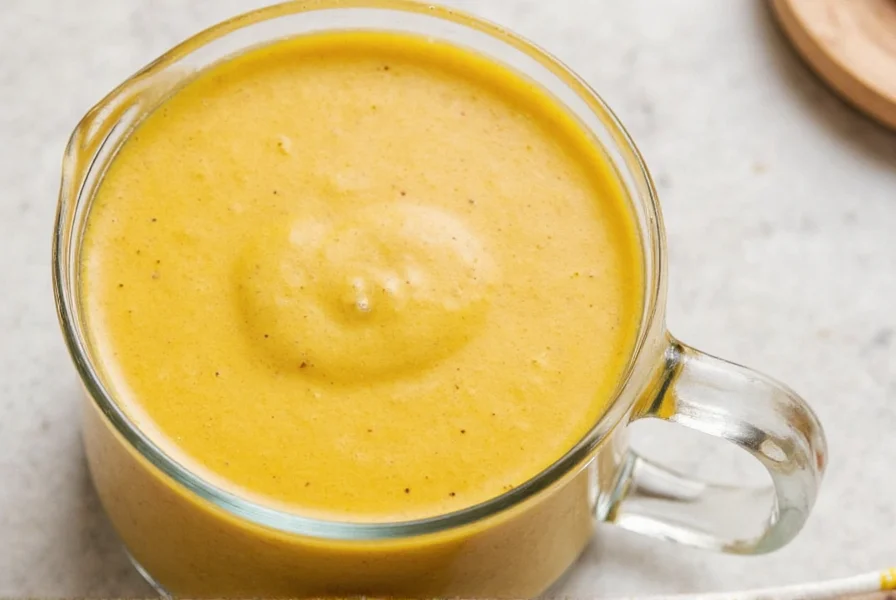The best ginger dressing recipe combines fresh ginger, rice vinegar, sesame oil, and a touch of honey for a balanced, vibrant flavor. This simple 5-minute recipe yields approximately 1 cup of dressing with no artificial ingredients. Whisk together 2 tablespoons freshly grated ginger, 3 tablespoons rice vinegar, 1 tablespoon soy sauce, 1 tablespoon honey, 2 tablespoons neutral oil, and 1 teaspoon sesame oil until emulsified.
Creating exceptional ginger dressing at home transforms ordinary salads into restaurant-quality dishes with minimal effort. Unlike store-bought versions filled with preservatives and excessive sugar, homemade ginger dressing delivers bright, authentic flavor that complements everything from delicate greens to hearty grain bowls. The magic happens when fresh ginger's spicy warmth mingles with the tang of rice vinegar and the nuttiness of sesame oil.
Why Fresh Ginger Makes All the Difference
While powdered ginger offers convenience, fresh ginger root contains volatile oils that create the distinctive zing characteristic of premium Asian cuisine. When grated finely, fresh ginger releases gingerol compounds responsible for both its pungent flavor and potential health benefits. For optimal results, use ginger that feels firm and heavy for its size with smooth, unwrinkled skin. Peel only what you need using a spoon's edge to minimize waste of the flavorful outer layer.
| Ingredient | Measurement | Key Function |
|---|---|---|
| Fresh ginger root | 2 tbsp grated | Provides signature spicy warmth and aromatic complexity |
| Rice vinegar | 3 tbsp | Offers mild acidity without overpowering other flavors |
| Neutral oil (avocado/grapeseed) | 2 tbsp | Creates smooth emulsion and carries flavors |
| Toasted sesame oil | 1 tsp | Adds nutty depth (use sparingly as it's potent) |
| Honey or maple syrup | 1 tbsp | Balances acidity with natural sweetness |
| Soy sauce or tamari | 1 tbsp | Provides umami and saltiness |
Step-by-Step Preparation Guide
Follow these professional techniques to create perfectly balanced ginger dressing every time:
- Prepare the ginger: Peel ginger with a spoon, then grate using a microplane for finest texture that fully incorporates into the dressing
- Combine wet ingredients: In a small bowl, whisk rice vinegar, soy sauce, and honey until sugar dissolves completely
- Emulsify slowly: Gradually drizzle neutral oil while whisking vigorously to create stable emulsion before adding potent sesame oil
- Incorporate ginger: Add freshly grated ginger and whisk thoroughly to distribute flavor evenly
- Rest and develop: Let dressing sit for 15 minutes before use to allow flavors to meld (optional but recommended)

Storage and Shelf Life Considerations
Properly stored in an airtight container, homemade ginger dressing maintains peak quality for 5-7 days in the refrigerator. The fresh ginger particles will settle over time, so always shake or whisk before each use. For extended storage, freeze portions in ice cube trays then transfer to freezer bags for up to 3 months. Thaw overnight in the refrigerator before using. Avoid storing dressing in metal containers as the acidity can react with the metal.
Culinary Applications Beyond Salad
This versatile ginger dressing shines in multiple applications throughout your kitchen:
- Marinade for proteins: Use as base for salmon, chicken, or tofu marinade (add extra garlic for enhanced flavor)
- Dipping sauce: Thin with additional rice vinegar for spring roll or dumpling dipping sauce
- Grain bowl dressing: Drizzle over quinoa or brown rice bowls with roasted vegetables
- Slaw dressing: Toss with shredded cabbage and carrots for quick Asian-inspired slaw
- Sushi accompaniment: Serve alongside sushi rolls as a healthier alternative to traditional sauces
Customization Options for Dietary Preferences
Adapt this basic ginger dressing recipe to accommodate various dietary needs without sacrificing flavor:
- Sugar-free version: Replace honey with 1-2 drops liquid stevia or omit sweetener entirely for keto-friendly option
- Gluten-free adaptation: Use tamari instead of soy sauce for certified gluten-free preparation
- Vegan alternative: Substitute honey with pure maple syrup for plant-based version
- Lower sodium option: Use low-sodium tamari and increase rice vinegar by 1 tablespoon
- Spicy variation: Add 1/4 teaspoon red pepper flakes or 1 teaspoon sriracha for heat
Troubleshooting Common Issues
Resolve these frequent ginger dressing challenges with professional solutions:
- Too spicy: Balance with additional honey or a splash of neutral oil to mellow ginger's intensity
- Too thin: Create thicker emulsion by adding 1/2 teaspoon Dijon mustard as emulsifier
- Too salty: Counteract with extra rice vinegar and a pinch of sugar to rebalance flavors
- Separation issues: Always shake vigorously before use; consider adding 1/4 teaspoon xanthan gum for stable emulsion
- Bland flavor: Increase ginger quantity or add 1 small garlic clove (minced) for more complexity
Why Homemade Beats Store-Bought Every Time
Commercial ginger dressings often contain preservatives, artificial flavors, and excessive sugar to extend shelf life and mask inferior ingredients. A typical store-bought version contains 5-8 grams of added sugar per serving, while this homemade recipe uses just 1 tablespoon of natural sweetener for the entire batch. Without stabilizers and emulsifiers, homemade dressing offers cleaner flavor and greater freshness. The difference becomes especially apparent when using high-quality ingredients like toasted sesame oil and freshly grated ginger, which lose their nuanced flavors during commercial processing.
Frequently Asked Questions
Can I make ginger dressing without sesame oil?
Yes, you can create a sesame oil-free ginger dressing by substituting an additional tablespoon of neutral oil and adding 1/4 teaspoon toasted sesame seeds (ground) for similar nutty flavor. The dressing will lack some traditional depth but remains delicious and versatile for those with sesame allergies.
How can I make ginger dressing less spicy?
To reduce spiciness in ginger dressing, decrease fresh ginger to 1 tablespoon and increase honey to 1.5 tablespoons. Alternatively, cook the grated ginger in 1 tablespoon of the rice vinegar over low heat for 2 minutes before adding other ingredients, which mellows the ginger's heat while preserving flavor.
What's the best way to store homemade ginger dressing?
Store ginger dressing in a glass jar with a tight-sealing lid in the refrigerator for up to one week. The fresh ginger particles will settle, so always shake vigorously before each use. For longer storage, freeze in ice cube trays then transfer to freezer bags for up to three months. Thaw overnight in the refrigerator before using.
Can I use ground ginger instead of fresh?
While fresh ginger delivers superior flavor, you can substitute 1/2 teaspoon ground ginger for 1 tablespoon fresh ginger. However, the flavor profile will differ significantly—ground ginger offers earthier, less vibrant notes without the bright, spicy kick of fresh ginger. For best results, use fresh whenever possible, but ground ginger works in a pinch.
What salads pair best with ginger dressing?
Ginger dressing complements Asian-inspired salads with mixed greens, mandarin oranges, sliced almonds, and grilled chicken. It also enhances grain salads with quinoa or brown rice, roasted vegetable salads featuring sweet potatoes and broccoli, and simple cucumber salads. The dressing's bright flavor particularly shines with salads containing fruit like apples, pears, or berries.











 浙公网安备
33010002000092号
浙公网安备
33010002000092号 浙B2-20120091-4
浙B2-20120091-4